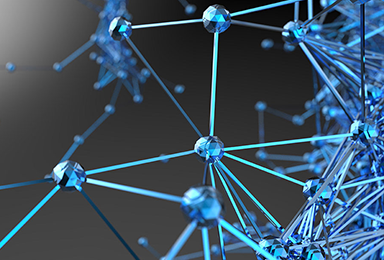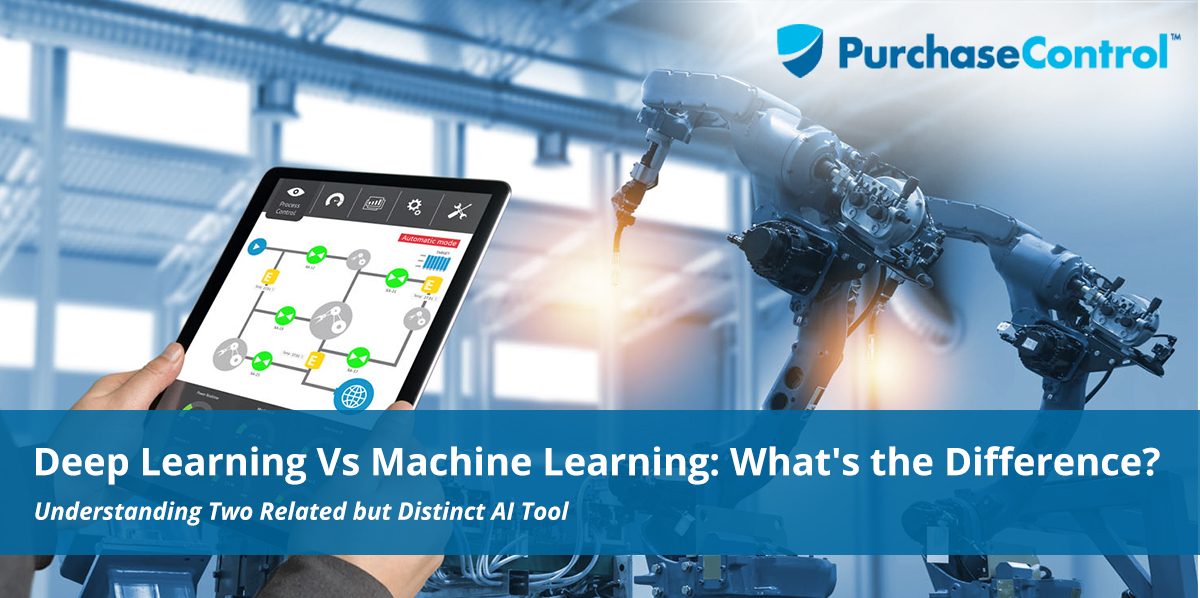In implementing advanced technological tools such as artificial intelligence (AI) as part of their business process management and digital transformation strategies, procurement professionals need to develop a nuanced and thorough understanding of the capabilities and limitations of such tools. While understanding the basics of artificial intelligence is important, it’s much easier to achieve powerful improvements to procurement processes when you’ve grasped the particulars of specific AI concepts.
Two such concepts—machine learning and deep learning—are often treated as essentially the same. And while they are interrelated, each possesses unique characteristics and capabilities.
Machine Learning vs. Deep Learning: An Overview
From state-of-the-art artificial neural networks to self-driving cars to powerful real-time analysis that turns a torrent of big data into actionable insights on demand, artificial intelligence is making significant inroads in industries throughout the global marketplace. It’s made terms like decision trees and linear regression and
Machine learning and deep learning are especially interesting to procurement professionals, because these types of artificial intelligence play important roles in data management and process analysis/optimization.
Machine Learning
Algorithms that analyze and learn from data, and then apply the knowledge gained to improve decision making, are engaged in what we call machine learning.
Like many artificial intelligence tools, the goal of machine learning is to emulate the capabilities of the human brain while increasing accuracy and speed. Machine learning is iterative and designed to build on its own successes, ideally improving performance and efficiency with every application of its growing knowledge.
To accomplish this, machine learning algorithms are trained with data sets in a process known as reinforcement learning. The machine is fed more and more data and allowed to execute its assigned tasks. Just like humans, the algorithms make mistakes, self-correcting and effectively learning as they go. Positive outcomes are encouraged, and negative outcomes, discouraged, reinforcing desired behaviors and ensuring continuous improvement.
The more data available, the more accurately, quickly, and completely the algorithm can complete its task. This data can come from a bewildering variety of sources: text, images, transaction data, GPS information, social media, etc.
Beyond those options, machine learning models can broaden their available training data even further through support for other data-management tech, including:
- Natural language processing, which gives the algorithm the ability to parse and analyze human speech and text for meaning and use it to execute searches, define parameters, or modify its behavior to conform with specific commands.
- Computer vision, which is focused on teaching algorithms to collect and analyze visual data to make decisions.
For example, an algorithm can be trained to review your viewing habits in your favorite streaming service and make suggestions based on keywords, cast members, and content found in other content you’ve already watched and rated highly. Support for speech recognition means you can even search with your voice.
Machine learning algorithms are an essential component of many popular applications and services, including:
- Music recommendation services such as Spotify, Google Sound Search, and Grooveshark.
- Data security applications, including anti-virus and anti-malware tools.
- Entertainment applications like Netflix, Amazon Video, and VUDU.
- Procurement software packages designed to automate procurement and AP workflows.
- Financial applications designed to monitor and suggest optimal trades in financial markets.
Despite the complexity of the coding involved, the basic function of machine learning algorithms is mechanical in nature, in that its iterative nature is a defined, limited process that embraces continuous improvement as a given, but not imagination or innovation. Machine learning is not necessarily machine thinking, as it were. That is why one definition of machine learning is narrow AI; algorithms can outperform their human counterparts within very well-defined contexts, but cannot emulate human ingenuity or generalized human behavior.
Deep Learning
Answering the question “What is deep learning?” is much more complex, and in many ways, more intriguing, than answering “What is machine learning?” They’re often conflated, but in truth deep learning is technically a subset of machine learning—one designed to add a bit more human intelligence (or at least, human-like intelligence) to the learning process.
Generally speaking, machine learning uses algorithms to perform and improve specific tasks within specific parameters while still relying on direct guidance from good old flesh-and-blood homo sapiens. When an algorithm driven by generalized machine learning makes a misstep, the humans in charge of the whole works can examine what went wrong and make corrections as necessary.
With deep learning, the algorithm dedicates some of its resources to building a deep neural network, a layered set of algorithms working in tandem to more accurately emulate a human brain. They are designed to make educated guesses and engage in unsupervised learning.
The neural networks used in deep learning are iterative, but are composed of hundreds or even thousands of algorithms working together. The number of layers in any given algorithm will vary, but each discrete layer has its assigned tasks, dependencies, and data flows, while remaining part of a cohesive whole. Working together, they share analyses and determine outcomes not just for their individual processes, but the overall directives assigned to the output layer of the primary deep learning algorithm.
One of the first demonstrations of deep learning occurred in 2012, when Google’s Andrew Ng taught the search engine to consistently identify cats using 16,000 interlinked computers. This type of neural network is called a convolutional neural network and is made up of convolutional neural layers. In the context of artificial intelligence, “convolutional” refers to the way in which these layers work together to perform contemporaneous analysis of related data points and compare their findings to produce a shared outcome, such as image recognition.
Today, the same concept is used by much more advanced convolutional neural networks to identify not just cats and dogs and people, but tumors and cancers in the body with accuracy and speed that exceed human capabilities.
Data scientists continue to refine deep learning models for greater accuracy, performance, and human intelligence.
“They’re often conflated, but in truth deep learning is technically a subset of machine learning—one designed to add a bit more human intelligence (or at least, human-like intelligence) to the learning process.”
How Deep Learning Can Improve Procurement
At first blush, it might seem like both machine learning and deep learning are better suited to the realm of science fiction (or at least data science) than practical applications in the procurement function. Yet the mathematical and analytic prowess of these two technologies is already being used to enhance the efficiency, productivity, and profitability of procurement departments and organizations around the world.
Using a cloud-based, AI-driven procurement solution like PurchaseControl, your procurement team can bring digital transformation to not just your procurement workflows, but your entire organization. It’s not a question of “deep learning vs machine learning,” but rather “How can we use both machine learning and deep learning to reach our goals for cognitive procurement?”
For example, with enough data points, time, and the occasional human correction, an automated purchase order approval workflow could incorporate and analyze calendar data and out-of-office messages to identify an approver who is out of the office, and automatically reroute the purchase order to the next approver in the list. The purchase order is approved on time, the order is placed with plenty of time to spare, and production continues without interruption. That’s textbook machine learning, based on reinforcement learning techniques and human tweaking.
That’s just the tip of the iceberg, however. Deep neural networks drive iterative process improvement and higher-level processes such as financial forecasting, crucial decision-making, and strategic sourcing. Fully automating your entire procure-to-pay (P2P) process will give you full visibility into your entire spend, capturing and organizing all transactional data. Centralized data management brings contract and vendor management data sets into the mix, providing more big data and additional context for each action performed.
Add a connection to your existing financial and enterprise resource planning (ERP) software. Connect your customer service department’s customer resource management (CRM) system. Bring in marketing data, industry news, global news, social media, weather, and more from outside sources.
Now, the neural network is factoring in everything from global unrest to potential weather delays to vendor performance and compliance history when making suggestions or refining processes.
The richer the data, the better the outcomes:
- Faster, more accurate, and more cost-effective P2P.
- Shorter PO and invoice lifecycles.
- Touchless processing eliminates human errors and delays.
- Automatic routing with contingencies ensures early payment discounts are captured and late fees avoided.
- Better staff morale, lower overhead, and more time and talent devoted to high-value tasks.
- More effective risk and contract management.
- Elimination of rogue spend and invoice fraud.
- Improved accountability and compliance enforcement.
- More strategic expansion, innovation, and supplier decisions.
- Optimal reputation management through strategic sourcing from vendors who meet your requirements while matching your expectations and ethics.
- Stronger contract negotiations and more opportunities for strategic partnerships with your best suppliers through access to complete vendor and market data.
- Better financial reporting and forecasting.
- Complete information makes for accurate, audit-friendly reporting.
- Deep learning algorithms can produce real-time insights much more quickly than humans, with greater accuracy based on the available data.
- Deep data analysis can reveal hidden opportunities for innovation and growth to increase profits, performance, and competitive strength.
Ready to Dive Deep?
The promise of machine learning lies in its ability to combine human intelligence with computer speed and accuracy. And while self-driving cars and personal companion robots may still lie beyond the horizon, your company can enjoy the benefits of machine learning today. Invest in the right tech tools for procurement, and you’ll be able to take control of your data and put artificial intelligence to work producing very real improvements in your company’s productivity, efficiency, and bottom line.
PurchaseControl Brings the Power of Artificial Intelligence to All Your Procurement Processes.
Find Out How








